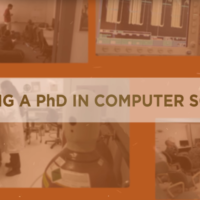Why CS Departments Should Embrace Computing Education Research
This post was written by the committee described below.
How can a CS Department benefit from hiring tenure-track faculty in the field of Computing Education Research (CER)? What are some of the major research questions in CER? How can CER enhance existing research in a CS department? A panel at the CRA Conference at Snowbird Meeting in July 2016 addressed these and other questions. The panelists included Diana Franklin (University of Chicago), Mark Guzdial (Georgia Tech), Scott Klemmer (UC San Diego), Amy Ko (University of Washington) and Ben Shapiro (University of Colorado-Boulder) in a session moderated by Ran Libeskind-Hadas (Harvey Mudd College).
CER is a growing area with substantial new funding opportunities (e.g., NSF CAREER awards, NSF Graduate Research Fellowships, and growing support from industry) and highly-regarded venues for publication. CER is focused on how people learn about computing and improving that process, from the kindergartener programming a robot toy, to an undergraduate in CS 1, to a statistician using the latest scriptable analysis tool.
CER is a synergistic domain for collaboration with other areas of CS. For example, computing education researchers often forge productive collaborations with colleagues in machine learning, programming languages, natural language processing, and human-computer interaction as well as with researchers in other departments such as education, cognitive science, and psychology. The panelists described a number of examples in which high impact and high profile research was conducted by groups brought together by questions and problems in CER.
The panelists also addressed the arguments for hiring CER researchers as teaching-track or research-track faculty. Teaching-track faculty typically have heavier teaching and service loads and thus less time to engage in research. If a department seeks to invest in research in computing education, it’s important to hire tenure-track faculty who have the time, resources, and opportunities to engage in research and supervise graduate students.
A number of universities have determined that this is a good time to invest in CER; there is a strong crop of new PhDs in the field and it’s possible to hire talent now that may be harder to attract as the demand for CER faculty increases. Some departments have chosen to start with with a single CER faculty member while others are building larger groups that can more easily attract top students and funding.
We encourage interested readers to take a look at the following additional resources:
- Amy Ko’s FAQ on CER.
- Diana Franklin’s paper “Putting the Computer Science in Computing Education Research” in the February 2015 issue of CACM.
- The proceedings of the 2015 ACM International Computing Education Research (ICER) Conference as an example of current work in the field.
- CCC-led white paper The Importance of Computing Education Research
- Scott Klemmer’s page on peer learning research – http://d.ucsd.edu/peer




